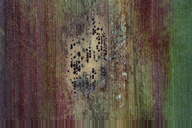 |
Little occurrence has been reported only in Hokkaido, the northern part of Japan.
|
 |
Fungal disease first occurred in Oct 2010 in Hokkaido, the most northern area of Japan. It causes wilting of whole plant at the yellow ripe stage. At the beginning, the roots turn red and then the amount of roots dicrease with some proliferation and the ear of infected plant hangs down like as Pythium root rot. Because the inside of the culm become hollow and soften with white to pink mold, it is difficult to cut and harvest the plants by machines. Causal organism are F. graminearum and F. oxysporum known to cause Gibberella stalk rot and Fusarium root rot, respectively abroad. The pathogenicity of F. graminearum is far stronger compared with F. oxysporum in results of inoculation tests. Reaction of resistance to the pathogens is distictly different among corn varieties.
|
 |
Fungal disease making the heads moldy and occurring especially in warm regions. It occurs from the end of summer to autumn and the mold of faint red or salmon flesh color is often produced in the ear. It becomes a purplish black and advances to the pith of the ear when the disease progresses severely. There are two kinds of causal organisms (G.zeae reported in a lot of cereals and F. verticillioides) in Japan. The latter produces the alkaloid, fumonisine, which is considered to cause lung edema of pig, and white brain syndrome of horse and gullet cancer of human.
|
| Spot-causing fungal disease occurring increasingly mainly in the cool region. The disease begins to occur around the rainy season and stripe lesions are produced along the midrib abundantly. Lesions are ash white with brown border, 0.5-3cm in length and 0.1-0.5cm in width. Lesions expand and fuse when occurring severely, and the infected leaf withers. The symptom in the picture is caused by race 3 of the pathogen, and the race is mainly occurring in Japan. Race 2 which produces short stripe is occurring a little, but no occurrences of race 1 which produces round lesions in specific corn lines have been reported in Japan. Race 3 produces the host-specific BZR-toxin, a cyclic peptide that helps the pathogen to invade susceptible corn and rice hosts. |
 |
Soil-borne disease that causes damping-off of seedlings in wet conditions at germination. The seeds infected with the disease cannot sometimes germinate, but in many cases, small seedlings at the 3-4 leaf stage get infected and wilt. The lesions like as gray streaks appear at first in the leaf. At this time, the roots changed to brown completely and the surface is covered with hyphae. Pythium spp. are known as pathogens and they are likely to occur at low temperatures, whereby seed rot and damping-off often occurs at relatively high temperatures.
|